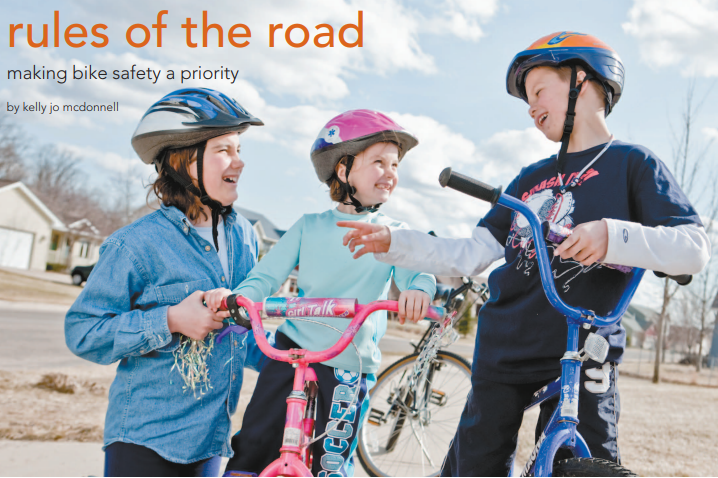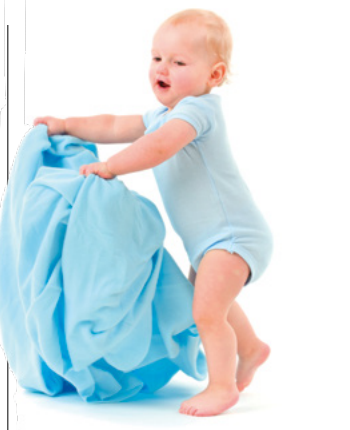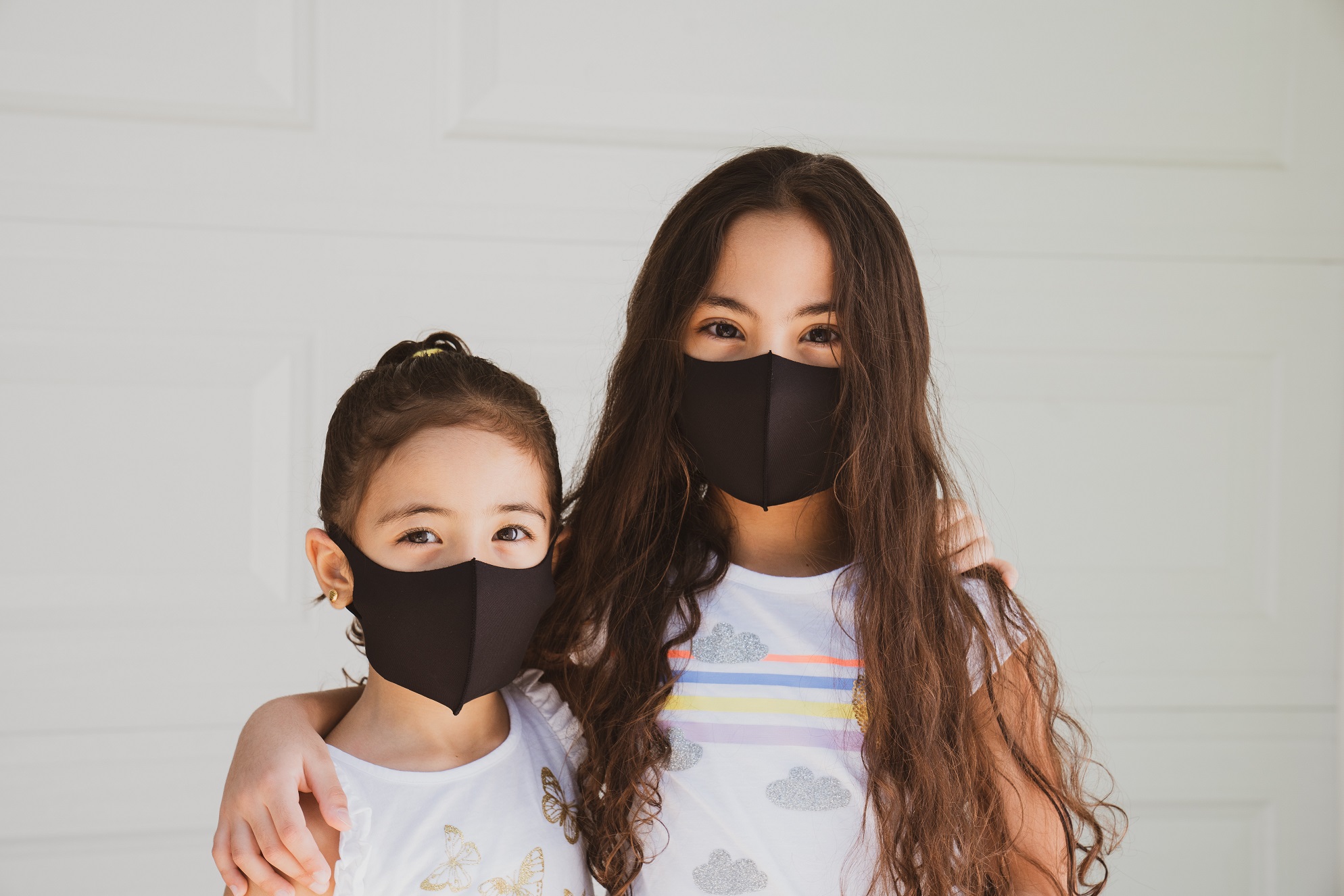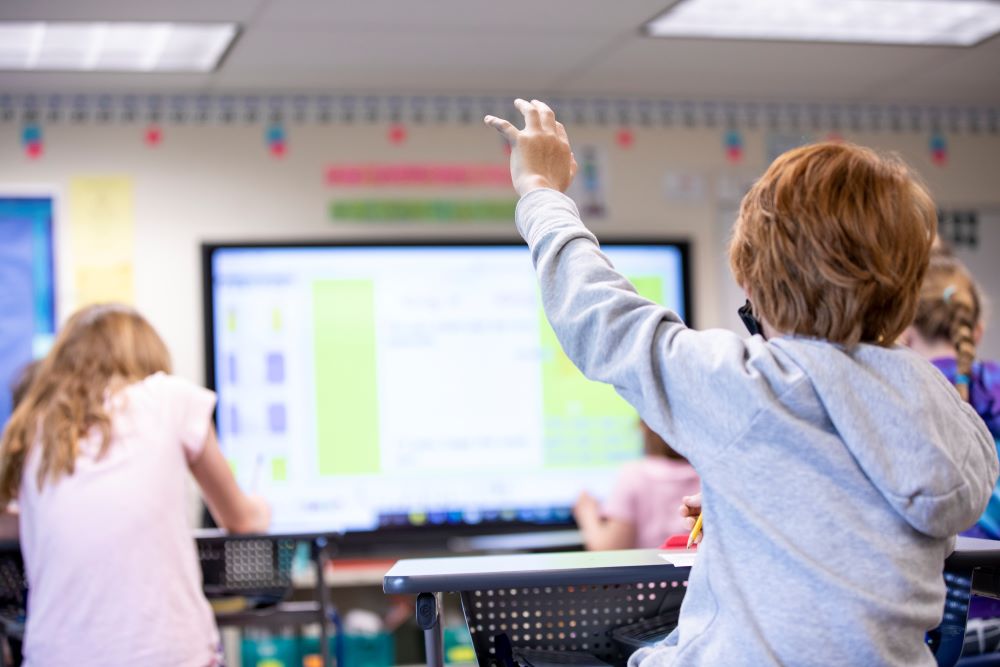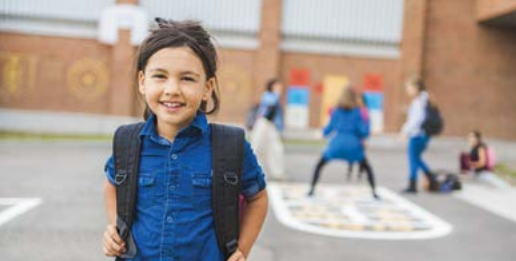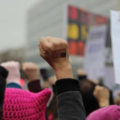Making bike safety a priority
Kids love to ride bikes, and Minnesota loves bicycles — the League of American Cyclists ranked it among the top “bicycle-friendly” states in the country. The season is short, yes. But before your kid takes too many laps around the block, it’s a good idea to make sure they are aware of some basic safety concerns. It’s not rocket science, just learning how to stay safe on the road while on two wheels.
head, brain, helmet
According to the Kids Health organization, 300,000 kids go to the emergency room because of bike injuries, and at least 10,000 kids have injuries that require a few days in the hospital. Ouch. Whether your child is going out for a long ride, or just hopping on the bike to go to the neighbor’s house, make sure the helmet is on.
But don’t go buy any old helmet. The U.S. government has created safety standards for them. A sticker should be on the helmet stating it has met standards set by the Consumer Product Safety Commission. The helmet should also fit properly (not be too big or too small). The helmet should sit level on your child’s forehead. Kids might want to tip the helmet back so it doesn’t hug the forehead … but if the forehead is showing, the helmet isn’t doing the job. And a reminder to little boys who love wearing their Twins baseball caps in the summer. NO wearing a cap under the bike helmet. The strap also should be adjusted so it’s snug under the chin — not twisted or loose. If the straps are hanging to the sides of the helmet, the helmet is likely to fall off your child’s head when they need it most.
And if your child still whines about wearing the helmet, remind them that bike helmets are WAY cooler now than they were back when we were first wearing them. Today’s helmets are lightweight and come in super cool colors. Let your child personalize it with favorite stickers, even. Better yet, use reflective stickers since they will make your child more visible to people driving cars.
Finally, set a good example. If you ride your bike without a helmet, your kid will no doubt do the same.
be seen & be safe
Kids should be riding only during the day. Their smaller bikes and bodies are not as visible. Take precautions especially in early morning hours or at dusk (the time of lowest visibility) and encourage bright clothes and reflectors. It’s important that other people on the road see your kids.
Avoid allowing night riding. If your child must ride at night, make sure there are reflectors on the front and rear of their bicycles. Most states have laws requiring bicyclists to use lights and/or reflectors during nighttime hours. The laws do differ from state to state, but Minnesota Statute 169.222 requires front-facing white light visible from 500 feet; attached to the bike or the rider; rear-facing red reflector; reflectors on each side of both pedals; and 20 square inches of reflectors on each side of the bicycle. A red-flashing rear lamp is optional.
Also, make sure nothing is dangling near the mechanisms while your child rides. You don’t want loose pant legs, shoelaces, or backpack straps to get caught in the bike chain. Take it from this author, who broke her leg by getting it caught in a bicycle spoke when she was 6 … no dangling. Kids shouldn’t wear sandals, or worse — flip-flops — when riding. No bare feet, either.

rules of the road: not just for cars
Bicycles are considered vehicles in many states, and have the same rights AND the same responsibilities as motorists. Everyone should be aware of and follow these basic rules:
• Go with the flow of traffic, not against it.
• Obey all traffic laws, including stop signs, signals, and lane markings.
• Watch out for parked cars! Ride far enough out from the curb to avoid the unexpected, such as a door opening suddenly or a car pulling out.
• Look before you turn. When turning right or left, always glance behind you for a break in the traffic, then signal before making the turn. Keep an eye out for left or right-turning traffic.
• Be aware of possible path or road hazards. Potholes, rocks, gravel, leaves, and broken glass are everywhere. All these hazards can cause a wipe out.
• ALWAYS ride with both hands on the handlebars. You might even suggest your child wear riding gloves; it will help them grip the handlebars better, and they’ll look like a professional. Cool!
• No crazy driving! Be predictable, not unpredictable. Ride in a straight line and not in and out of cars. Signal your move ahead of time.
• Last but not least — no wearing headphones while riding a bike. Music can distract kids from the noises around them, such as a car honking its horn. Armed with safety information, your kids will be able to enjoy the Minnesota biking season. Did I mention it’s short? get out there and enjoy!
did you know?
The National Highway Traffic Safety Administration says children less than 10 years of age are considered not mature enough to make decisions necessary to safely ride in the street. Sidewalk riding only is recommended.

RESOURCES
- kidshealth.org
- biketcbc.org
- bicyclesafe.com
- bicyclinginfo.org
- livestrong.com
- nhtsa.gov
- mndnr.gov/trails
Kelly Jo McDonnell is a freelance writer and parent in the Twin Cities.





